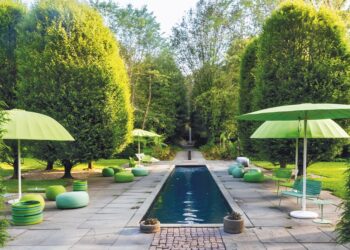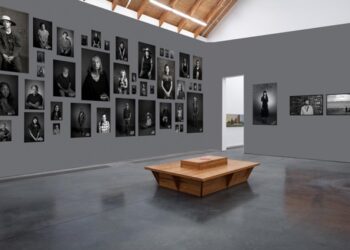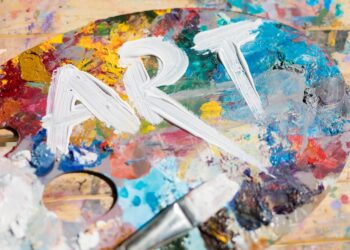Photography Chris Leidy’s magnificent work captures the unparalleled beauty of the deep-seas and the majestic aquatic life that call the ocean home.
Leidy, the great-great-grandson of the newspaper publisher Joseph Pulitzer and the grandson of fashion designer Lilly Pulitzer Roussea, is sharing more than 100 spectacular images of his exploration of the Coral Triangle, home to 30 percent of all the world’s coral, in a new Assouline book, The Coral Triangle.
We chatted with Leidy about his incredible underwater photography, first book of photography, top spots to capture, dream destinations and more.
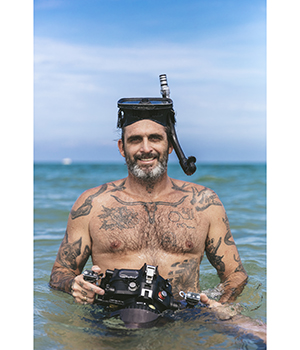 |
|
Photography Chris Leidy. (Courtesy Photo) |
How did you get your start in underwater photography?
CL: My underwater passion started when I was a kid; when I was able to witness the amazing beauty our oceans hold first hand. I couldn’t get enough – I was diving and freediving and surfing every chance I could, and always wanted to experience more. That passion came into new focus once I went to film school, where I learned the intricacies and nuances of working behind the camera. After starting my career in the film and television worlds post-college, I went back to my underwater roots, and married my oceanic passions with my growing photography skills. I wanted to find a way to share the extraordinary experiences I’ve had the privilege of having below the waves with everyone else. Since then, I’ve traveled the world documenting my vision of those experiences through my underwater art.
Lilly Pulitzer, the clothing line of your grandma, renowned designer Lilly Pulitzer Rousseau, often features ocean and sea life prints. Was that at all an inspiration for your career?
CL: My love of abstract patterns is certainly inspired by my Grandmother, more so than any one particular print from her collection. We saw things in similar fashion, and I’ve definitely taken a dive into her creative mind over the years, when I’ve thought of the framing and composition of some of my pieces. Her skill in pattern is something I’ve tried to emulate, with the texture and depth created by a recurring pattern, there is real beauty in seeing the abstractness in all of that minute detail.
The work featured in your first book of photography with Assouline, The Coral Triangle, is absolutely stunning. Tell us about that project.
CL: I started shooting the Coral Triangle over ten years ago, and during those first dives, I never could have imagined that one day it would all be compiled in this book. For those not familiar, the Coral Triangle is a vast area encompassing millions of square miles, from the Philippines to Indonesia and east to the Solomon Islands, northeast of Australia. I’ve been drawn to this expanse of ocean for so long because of its incredible marine biodiversity – from the variety of reef color (there are over 500 species of reef-building coral in this area alone), to the variety of its inhabitants, there is more to see here than you could ever imagine. After 11 years of shooting the region, it seemed natural, although very difficult I might add, to showcase some of my favorite photographs from the Coral Triangle.
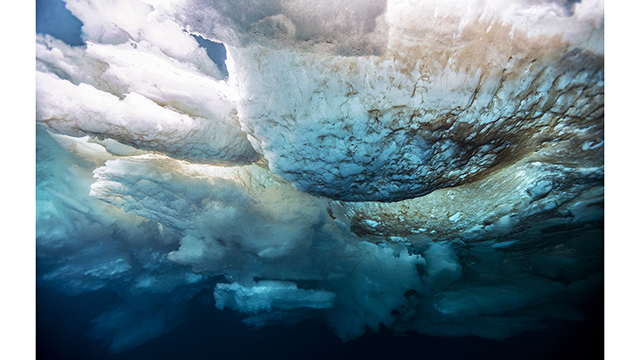 |
|
One of Leidy’s Arctic images. (Photo: Chris Leidy) |
What are your top spots to capture – both for work and for pleasure?
CL: I find myself drawn to places that push me out of my comfort zone; places where there is a contrasting reality of what is on land, vs. what can be found underwater. I find greater beauty in that dichotomy of raw and real, and at times even a bit dark on the surface, next to the pristine and extraordinary world that exists in the depths; so contrasting that you might never even be able to imagine its existence when on the shore.
Some of my greatest trips have been in those types of places, where I can submerge myself so completely in the environment. From my first ice diving experience in the Arctic Circle, which was a beautiful mental challenge in itself, shooting from a more confined, cold environment; to my many trips to Papua New Guinea, with its incredible oceanic biodiversity; to the Red Sea off the coast of Egypt, from the pyramids on land, cascading down into the most aquarium like underwater scenes you could imagine – all of these experience have been magical in their own ways.
When packing for an underwater adventure, what should one make sure to bring?
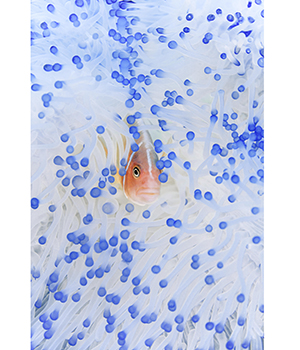 |
|
An image from The Coral Triangle. (Photo: Chris Leidy) |
CL: Outside of bringing good camera equipment – in my case I use a Canon 5DSR, and your mask and fins, the most important thing to remember to bring is an open mind. If you go into a dive with a specific mental list of everything you are hoping to experience, more times than not you’ll find yourself missing out on something. By taking the blinders off and swimming freely, with no real agenda, you’ll find that your encounters are more of a surprise and a bigger blessing.
You’ve had a firsthand look at the impacts of climate change. Could you speak to the importance of ocean conservation and about some of the devastation you’ve witnessed?
CL: Because I rarely travel to the same exact destination twice, it is tough to see the devastation as it is happening, but I have witnessed the overall effects of climate change, including bleaching of the reefs in various parts of the world. I think the destruction in a larger sense is a mix of climate change and the behavior of our population. I’ve seen parts of the oceans littered with trash, and I’ve seen deterioration of some reefs because more novice snorkelers and divers are trying to experience them and inadvertently damaging the ecosystems there. Ultimately we are all visitors when we dive under the waves, and keeping that environment safe for all of the ocean’s inhabitants that call it home is imperative.
What locales will you be focusing on next?
CL: My bucket list of locations I want to shoot next is always growing. Once we’re all able to safely travel again, I look forward to going back to Bali, and I’d also love to explore parts of Mexico even more: from the Cabo Pulmo in the Sea of Cortez, with its open ocean fish, whales and more, to all the cenotes.
As someone who spends time on the East End, have you ever documented your time here through your work?
CL: When I am on the East End, I am usually so focused on being present with my family that I haven’t spent a lot of time photographing it. That said, there is so much beauty in Southampton, especially in the ocean. I’ve always loved surfing, and as has been more common in recent years, I’m still amazed that you can see Humpback whales just offshore.
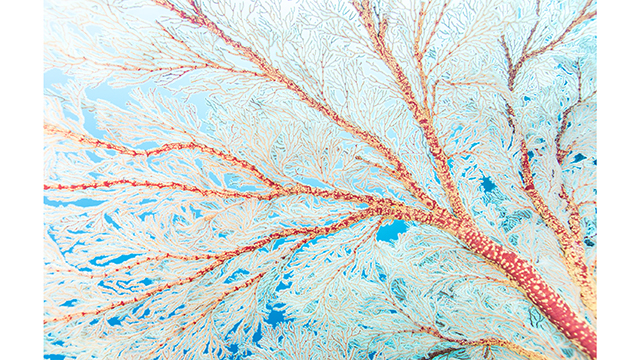 |
|
The Coral Triangle is home to 30 percent of all the world’s coral. (Photo: Chris Leidy) |
What format do you feel represents your work in the best way?
CL: My eye is drawn to the texture and pattern that I see in the small things that other people would usually swim over and not notice. The ocean itself is a beautiful thing, but there’s even more beauty in seeing the intricacies up close, and that is what I try to capture in my work. And then to print that on a massive eight foot acrylic – you’re taking something so small and giving it the room to be experienced in an even greater way.
What do you hope people take away from viewing your work?
CL: I want my work to challenge the viewer to think outside of the box of what underwater photography can be. While my contemporary art pieces are in part documenting what I see, the composition of my work is meant to let your imagination run wild, so that you might not always know exactly what you are looking at.
For more information about Chris Leidy’s work, visit www.leidyimages.com.


